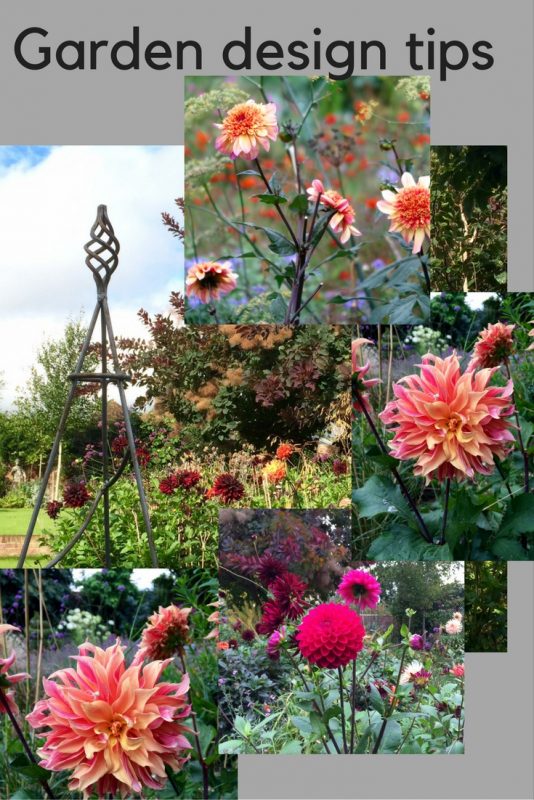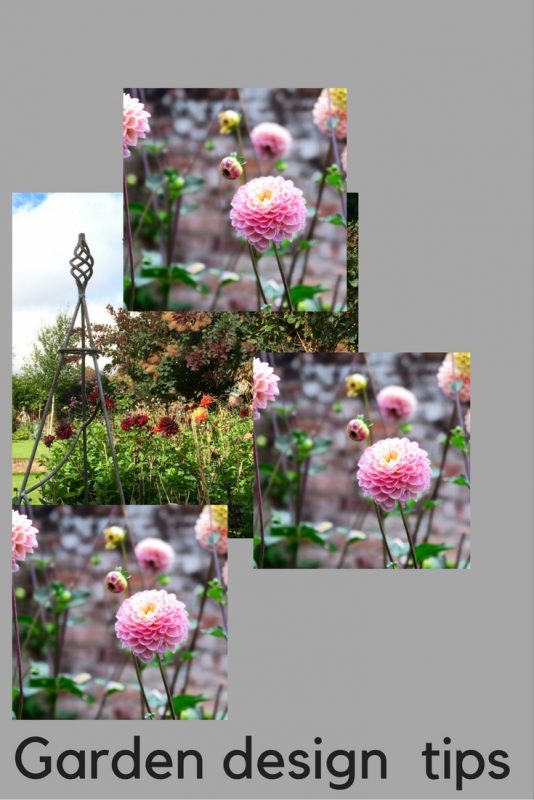I’ve just heard some really inspiring garden design ideas from Andy Sturgeon, winner of nearly 40 national and international garden design awards.
He spoke at our local Painters Forstal Gardening Club, in Lorenden School hall.
And everything he said was not only fascinating, but was also directly relevant to our own gardens. We were on the edge of our mini-sized primary school chairs.
He whisked through a quick history of garden design, from the Alhambra, the Renaissance and the influence of the Grand European Tour, ending up with the influence of package holidays and the TV programme, Groundforce.
He pinpointed the time at which garden design became a career, and no longer purely the preserve of the wealthy with their grand estates. ‘In the 1960s, the package holiday arrived,’ he said. ‘And with it came patio doors.

Andy Sturgeon, winner of over 40 national and international garden design awards including several Chelsea ‘Best in Show’.
Patio doors?
Patio doors, he explained, have transformed the middle-sized garden. In the interests of full disclosure, I must admit he didn’t use the word ‘middle-sized’. But that is undoubtedly what he meant.
‘People brought the idea of patio doors back to their own homes,’ he said. ‘For the first time, they could see their gardens from their houses all year round.’ Television programmes, such as GroundForce, stimulated our interest in what we could do with our gardens and Andy Sturgeon started winning Gold Medals at Chelsea.
Most of his work is in urban gardens, he says. Even if their owners can afford one of Britain’s top garden designers, they are still restricted by some of the same factors that frustrate all of us – mainly lack of space.
How to design your garden so that it doesn’t date
A garden will date if it’s too fashionable, explains Andy. ‘Hidcote is the most visited garden in Britain,’ he says. ‘And it was designed in the 1920s. It hasn’t dated.’
That’s because it uses natural materials, such as brick, wood and stone, for the hard landscaping elements.
So protect your garden from looking ‘dated’ by using brick, wood and stone. You can follow fashion with the planting.
Give a garden a heart
‘Give your garden a heart or a hub,’ Andy advises. He showed us a number of gardens he’d designed. It was noticeable that places to sit weren’t always directly outside those patio doors. Sometimes there were a pair of sun loungers halfway down the garden or a table and chairs a third of the way down.
If your house isn’t beautiful, mask it
Not all houses are beautiful. If yours isn’t, then it’s worth thinking about trees, pergolas or major planting close to the building.
Take elements from the context of your garden
What can you see of your wider environment? Andy designed a roof garden for a block near the River Thames. He incorporated a pond, which reflects the sky in the same way that the Thames reflects the London sky. Another roof garden was near the Lords Cricket Ground, so he used fake lawn to echo the cricket green.
Take inspiration from nature
Andy is always taking photographs of landscapes from car windows. He uses these to inspire his domestic gardens. Don’t copy nature, he says. Take elements of it, such as the smell or the way the greenery grows.
Be realistic about how you maintain your garden
It may be a surprise to hear that a top designer has used fake lawn. ‘But you need to be realistic,’ says Andy. ‘The housekeeper at the flat near Lords hoovers the lawn when she does the carpets. It would be almost impossible to maintain real lawn in that context.’
Think about the green structure first
‘When I design a garden, I think about the green structure first,’ says Andy. ‘The flowers are on top.’
I can see, looking at my own garden, where the green structure works. It is, undoubtedly, the best part of the garden. It’s so easy to get diverted by the excitement around flowers.
Curves are more expensive than straight lines
If you’re planning a garden design, straight lines will be cheaper to implement. Andy reckons that ‘curves add 50% to the cost of landscaping.’
It makes sense – a curved wall, path or terrace will mean more time is spent cutting bricks and laying them.
Put images on paper when you’re planning
Andy uses Powerpoint to collate images of his ideas. ‘It reminds you what direction you’re going in.’
A top garden design tip is to repeat the image if you’re planning to repeat the element. If you are thinking of using, for example, a particular grass in several places in your garden, add several images of the grass to the plan, not just one.

I’m trying to use Andy’s technique to decide if I should go for softer or more vibrant colours with next year’s dahlias.
Oddly enough, this is harder than it looked. I tried to plan next year’s border using Canva, but don’t feel I’ve got the Andy Sturgeon touch quite yet.

Pinks or oranges? I think the pink is very pretty, but maybe the more vibrant oranges ones will be better in the current garden?
Andy Sturgeon is a brilliant speaker. I could have listened to this talk several times over, and I would still have learned something new. And it was great that he took the time to visit a village gardening club. See his website for stunning photographs of gardens he’s designed.
(I have to say that the Painters Forstal Gardeners’ Club punches well above ‘a village gardening club’ – other speakers have included Fergus Garrett of Great Dixter.). If you live near Faversham (East Kent), find out more about it here.
The post 9 fascinating and useful garden design ideas from the top appeared first on The Middle-Sized Garden.
from The Middle-Sized Garden http://www.themiddlesizedgarden.co.uk/4-fascinating-and-useful-garden-design-tips-from-the-top/
No comments:
Post a Comment